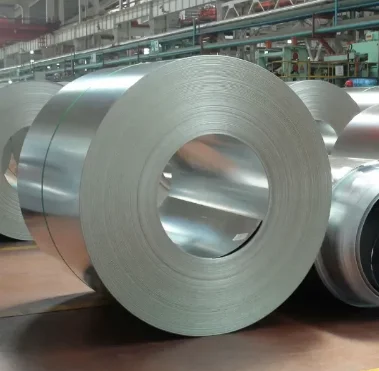views
What is Galvanized Steel Coil

Galvanized steel coils, thin steel sheets that are dipped into a molten zinc bath so that a layer of zinc adheres to their surface. It is mainly produced by the continuous galvanizing process, whereby coils of steel are continuously dipped in a bath of molten zinc to make galvanized steel sheets; alloyed galvanized steel sheets. This steel is also manufactured by the hot dipping method, but immediately after leaving the bath, it is heated to around 500°C to produce an alloyed coating of zinc and iron. This type of galvanized coil has good paint adhesion and weldability.
Advantages of Galvanized steel coils
1. Corrosion resistance
Galvanized steel coils have a strong corrosion resistance. It can prevent the surface of the steel sheet from corrosion and prolong its service life.
2. Good decorative properties
Galvanized steel coil looks clean and more beautiful, increasing the decorative nature.
3. Rust and corrosion resistance
Galvanized steel coils have a strong resistance to oxidation and can strengthen the rust penetration resistance of the parts. For example, the back plate of the indoor unit of the air conditioner, the back plate of the cabinet unit, the internal parts, the shell and interior of the outdoor unit are made of galvanized sheet, and the working environment of these parts will encounter strong oxidation conditions such as rain, sunlight, warm and hot gas corrosion, so galvanized steel coil is often chosen.
Drawbacks of Galvanized steel coils
1. Original sheet defects
Surface defects in the original galvanized sheet, such as creases, pits and wavy edges, continue to affect galvanized steel coils and become surface defects. Therefore, manufacturers must inspect the original sheet prior to production.
2. Black spots
A. The zinc coating is not sufficiently pure and metal impurities form primary cells on the zinc surface. When it is conducive to hydrogen precipitation, the surface of the zinc coating tends to produce black spots.
B. When the content of impurities such as copper, iron and arsenic in the zinc coating is high, these impurities show black after passivation treatment.
C. Residues form on the surface of the original sheet without adequate treatment of dirt and corrosion, which prevents some parts from being galvanized and results in the zinc coating coming off easily due to defects, thus causing black spots.
D. Leakage can occur during the galvanising process and black spots can easily form during the post-treatment process.
E. Residues or black ash (carbon or carbon compounds) mixed in the galvanising solution adhere to or reside in the zinc coating and bind firmly to it. Black spots can be seen on the finished galvanized sheet.
F. Black spot wear. Due to rough handling during transport and stacking.
3. White Rust
The surface of galvanized steel coils is damp or soaked by rain. At a certain temperature, the zinc is oxidised to produce a white powder. The corrosion resistance of the white rust surface is greatly reduced, affecting its use.
4. Uneven zinc coating
Uneven zinc coating on the surface of galvanized coil, uneven thickness, or even small particles on the surface. There is excess zinc on the surface of the strip coming out of the galvanising pot and the excess is blown away by the air knife (jet of high pressure gas), thus facilitating the control of the thickness of the zinc layer. The air pressure of the air knife, the distance between the air knife and the strip and the speed of the strip will directly influence the thickness of the zinc layer. If the air supply to the air knife is unstable or if the air knife pressure is insufficient, the zinc coating will build up, i.e. zinc scars.
Wuxi Siyoute produces and sells a variety of galvanized steel coils, focusing on the quality of galvanized steel coils. If you want to order wholesale, you can call +86-18921224618, email jennifer@wxsytgt.com or visit https://www.wxsiyoutegt.com/.











